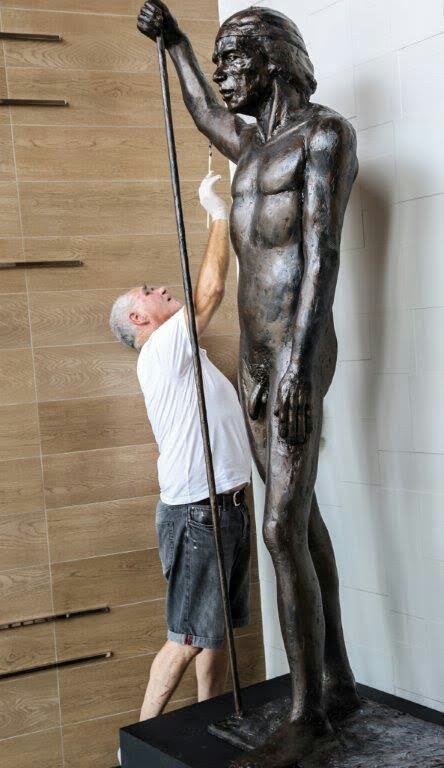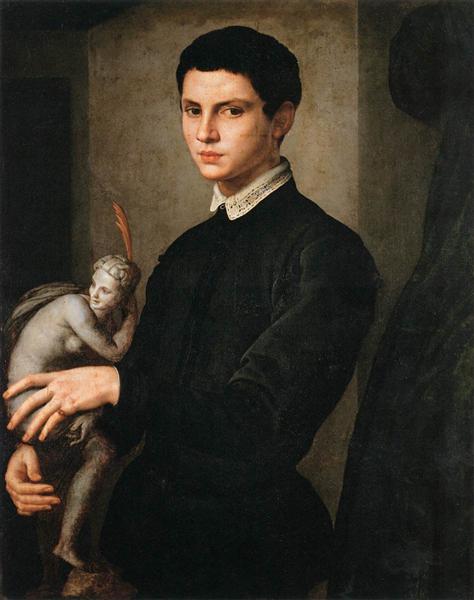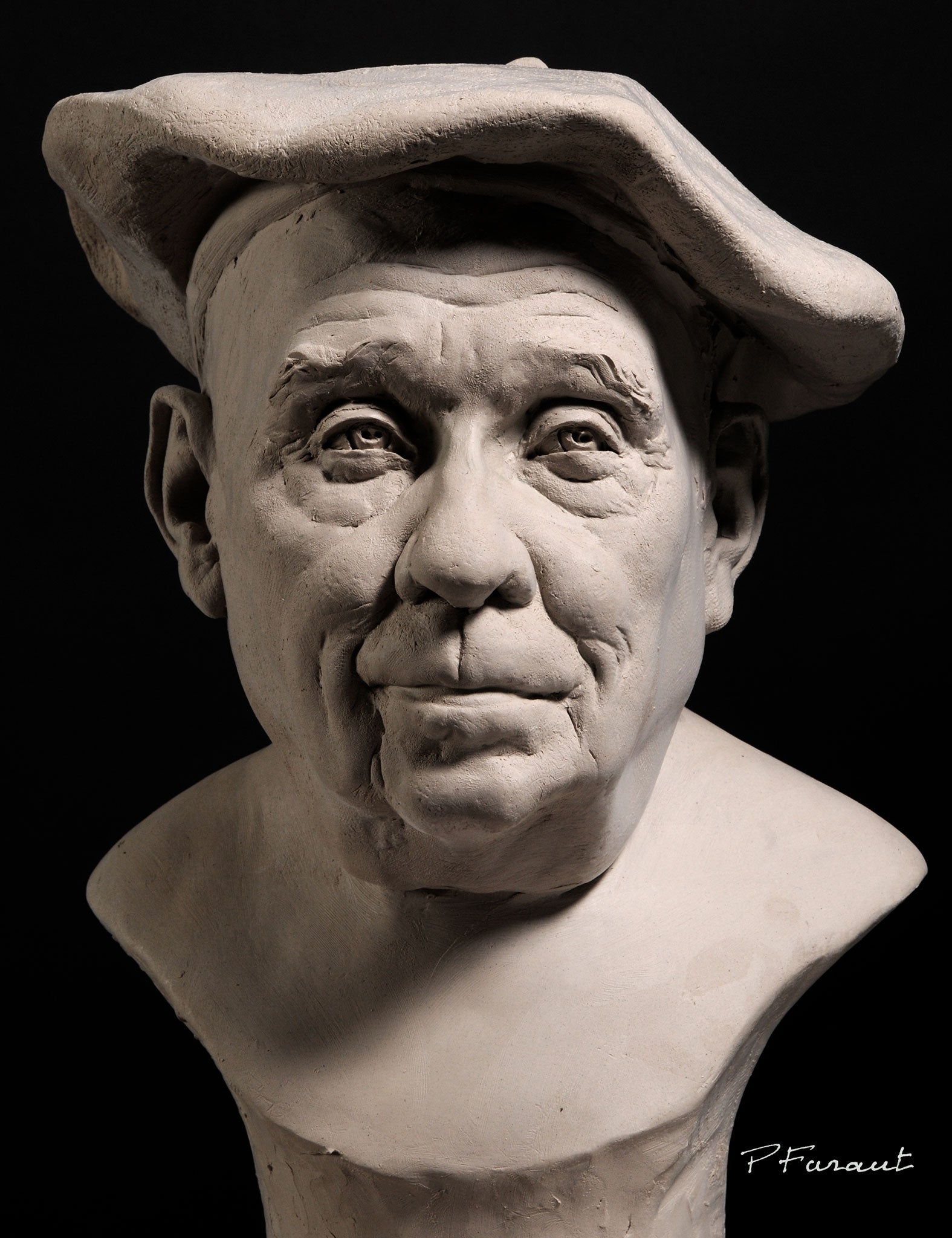Artistic Evolution: From Classic to Modern with Bronze Sculptures
Wiki Article
The Advancement of Sculptures: From Ancient to Modern
The Advancement of Sculptures: From Old to Modern.Sculpture, one of the oldest kinds of art, has been an important part of human world for millennia (Robert C Hitchcock Sculptor). From the old people of Egypt and Greece to the modern period, sculptures have evolved, reflecting changes in artistic techniques, materials, and cultural influences. This trip through time traces the advancement of sculptures, checking out the shifts in vogue, topic, and imaginative expression
Beginning with the ancient world, sculptures crafted from rock and later bronze captured the essence of divine beings, leaders, and everyday life. The Renaissance period experienced a revival of classical sculpting methods, as artists looked for to replicate the graceful kinds of ancient Greek and Roman sculptures. In the contemporary age, musicians tested typical boundaries, welcoming abstraction and testing with new products.

This exploration will certainly explore the varied evolution of sculptures, exposing the rich tapestry of imaginative expression throughout various durations and cultures.
Old Sculptures: From Stone to Bronze
Ancient sculptures transitioned from being taken of stone to being cast in bronze. This change marked a considerable development in the art of sculpture, enabling greater refinement and detail in the finished jobs. Rock sculptures, while excellent in their very own right, were restricted by the nature of the product. Stone called for substantial sculpting and forming, frequently resulting in an extra streamlined depiction of the topic.The intro of bronze as a medium for sculptures brought about a revolution in artistic expression. Bronze supplied carvers the chance to produce natural and intricate types that were not feasible with rock. The process of casting bronze enabled the creation of numerous copies of a sculpture, allowing larger distribution and preservation of these imaginative work of arts.
The transition from stone to bronze likewise saw a shift in the subject issue of sculptures. While stone sculptures predominantly depicted gods, goddesses, and mythological numbers, bronze sculptures started to mirror a wider series of topics, including everyday individuals and pets. This development of topic showcased the versatility and versatility of the bronze medium.
Renaissance Rebirth: Forming in the Classical Design
The Renaissance resurgence of sculpture witnessed a revival in the classical style, building upon the innovations made during the shift from rock to bronze in ancient sculptures. Throughout this duration, artists sought to recreate the classical aesthetic and perfects of appeal that were prevalent in old Greek and Roman sculptures.One of the essential qualities of the Renaissance resurgence was the emphasis on naturalism and the human type. Carvers like Donatello and Michelangelo aim to record the physiological details and expressions of their topics with unmatched accuracy. They examined the body and incorporated their monitorings right into their sculptures, leading to reasonable and natural depictions.
Another crucial aspect of the Renaissance revival was the expedition of point of view and depth. Artists used techniques such as contrapposto, where the weight of the body is shifted to one side, creating a sense of movement and dynamism. They also explore different materials, including marble and bronze, to attain a level of refinement and details in their sculptures.
The timeless design of the Renaissance resurgence had a profound influence on later periods of art, functioning as a structure for the development of Western sculpture. It brought a renewed recognition for the charm and splendour of the human kind, and its heritage can still be seen in contemporary sculptures today.
Modernism and the Avant-Garde: Breaking Conventional Borders

One of the crucial characteristics of modernist sculpture was the focus on abstraction. Artists relocated far from practical representations and instead concentrated on capturing the significance of the topic with simplified types and geometric forms. This separation from traditional representation permitted artists to express their feelings and concepts in a more personal and subjective way.
Additionally, the progressive activity tested societal standards and conventions, motivating musicians to experiment and press the borders of their art - Portrait Sculptor. Sculptors started incorporating unusual materials such as discovered things, commercial products, and also all-natural components into their job. This exploration of brand-new products and techniques not just broadened the opportunities for sculpture yet also tested the standard ideas of what can be thought about art
Contemporary Sculptures: Exploring New Products and Concepts
With a concentrate on checking out new products and ideas, contemporary sculptures have changed the field of art. Artists today are pressing the boundaries of standard sculpture by utilizing innovative materials and trying out with abstract concepts. These sculptures challenge standard ideas of materiality, definition, and form, inviting visitors to engage in a new and provocative imaginative experience.Contemporary carvers are accepting a variety of products, including plastic, glass, metal, and even organic matter. Equine Sculptures. They are not restricted to the standard medium of rock or clay, enabling higher freedom of speech and trial and error. This change towards unconventional products has opened up brand-new opportunities for musicians to produce sculptures that are vibrant, interactive, and visually striking
In addition to checking out new products, modern sculptures additionally delve into complex and abstract ideas. Musicians are now discovering themes such as identity, social problems, and the setting, making use of sculpture as a powerful medium for social discourse and self-contemplation. These sculptures test viewers to think critically and engage with art on a much deeper degree, stimulating conversations and provoking emotional reactions.
Worldwide Influences: Sculptural Traditions From Around The Globe

In ancient Egypt, sculptures were created primarily for religious and funerary objectives. The iconic sculptures of gods and pharaohs, such as the Great Sphinx and the breast of Queen Nefertiti, display the Egyptians' proficiency of stone carving and their belief in the afterlife.
In old Greece, sculpture reached its optimal throughout the classic period. Influenced by the suitables of consistency, proportion, and charm, Greek sculptures emphasized the human type and celebrated the achievements of gods, heroes, and athletes. The popular sculptures of Aphrodite of Knidos and the Discobolus exemplify the Greeks' quest of excellence in sculptural art.
In old Rome, sculpture offered both political and artistic functions. Portrait Sculptor. Roman sculptures usually portrayed emperors, generals, and mythological numbers, reflecting the power and grandeur of the realm. The marble statuary of Augustus of Prima Porta and the significant Arch of Constantine are significant examples of Roman sculptural success
Asian sculptural traditions, especially in India, China, and Japan, have additionally had an extensive effect on the development of sculptures. Indian sculptures, such as the delicately sculpted temples of Khajuraho and the enormous sculptures of Buddha, exhibit an abundant blend of religious, mythical, and building components. Chinese sculptures, defined by their fine workmanship and interest to information, commonly depict deities, pets, and epic numbers. Japanese sculptures, influenced by Buddhism, highlight simplicity and serenity, seen in the tranquil statues of Buddha and the classy art of bonsai.
The worldwide influences on sculpture proceed to evolve in the modern era. As we look to the future, it is particular that the global influences on sculpture will certainly proceed to shape and redefine this ancient art type.
Conclusion
In verdict, the evolution of sculptures has actually seen a shift from old stone and bronze works to the timeless revival throughout the Renaissance. Today, modern sculptures explore brand-new products and principles, while also attracting motivation from international sculptural traditions - Robert C Hitchcock Sculptor.From the old human beings of Egypt and Greece to the modern-day period, sculptures Portrait Sculptor have actually evolved, mirroring changes in imaginative methods, materials, and cultural influences.Starting with the ancient world, sculptures crafted from stone and later bronze recorded the significance of divine beings, leaders, and daily life.Old sculptures transitioned from being carved out of stone to being cast in bronze. While stone sculptures mostly shown gods, goddesses, and mythological figures, bronze sculptures began to show a more comprehensive array of subjects, including day-to-day individuals and pets.In conclusion, the evolution of sculptures has seen a change from ancient rock and bronze functions to the classic rebirth throughout the Renaissance.
Report this wiki page